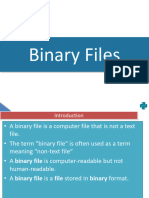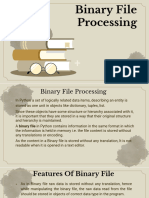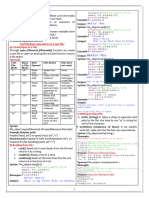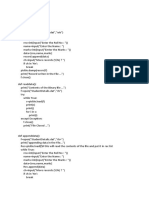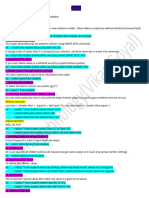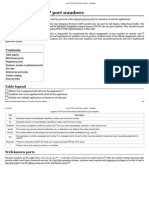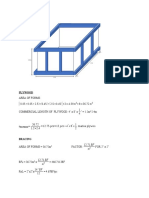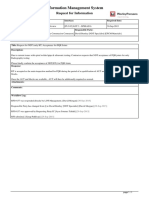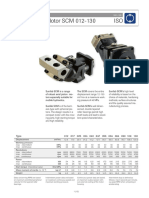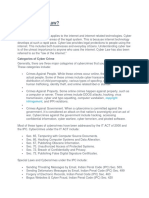0% found this document useful (0 votes)
124 views6 pagesPython Binary File Handling
The document discusses binary file operations in Python. It explains that binary files store data in the same format as memory and do not require translation. The Pickle module can be used to store Python objects in binary files by converting them to byte streams. Methods like dump() and load() allow writing objects to and reading from binary files. Several examples demonstrate taking user input to create lists and dictionaries and storing them in binary files, then reading the stored data back.
Uploaded by
chiragg642Copyright
© © All Rights Reserved
We take content rights seriously. If you suspect this is your content, claim it here.
Available Formats
Download as PDF, TXT or read online on Scribd
0% found this document useful (0 votes)
124 views6 pagesPython Binary File Handling
The document discusses binary file operations in Python. It explains that binary files store data in the same format as memory and do not require translation. The Pickle module can be used to store Python objects in binary files by converting them to byte streams. Methods like dump() and load() allow writing objects to and reading from binary files. Several examples demonstrate taking user input to create lists and dictionaries and storing them in binary files, then reading the stored data back.
Uploaded by
chiragg642Copyright
© © All Rights Reserved
We take content rights seriously. If you suspect this is your content, claim it here.
Available Formats
Download as PDF, TXT or read online on Scribd
/ 6








